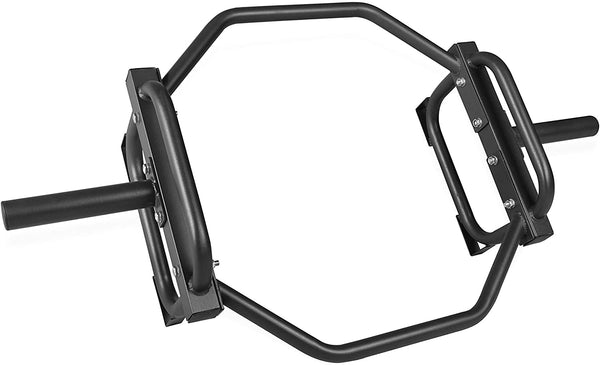Your Cart is Empty
November 06, 2023 3 min read
One of the most common questions that fitness enthusiasts ask is, “What’s the difference between a hex bar and a trap bar?” It’s an important question to ask, as both types of bars can be used for a variety of exercises, including squats, deadlifts, presses, rows, and more.
Shop The Collection: BarbellsThe answer to this question isn’t as straightforward as you might think – both bars have their advantages and disadvantages, and it’s important to understand the differences between them before deciding which one is best for your needs.
 Shop The Gear: CAP Barbell Olympic Trap Shrug Bar, $99.99 USD
Shop The Gear: CAP Barbell Olympic Trap Shrug Bar, $99.99 USD
A hex bar (also known as a shrug bar or powerlifting bar) is a type of weightlifting bar with a hexagonal shape. It has six sides, and each side contains a handle or grip. This allows the user to perform a variety of exercises while standing in the center of the bar, instead of having to hold onto the bar from the outside.
The hex bar’s design also allows the user to lift heavier weights than they would be able to with a traditional straight bar. This is because the user’s grip strength is increased when using the hex bar due to the handles being evenly spaced and angled outwards. Additionally, the hex bar is great for those who have limited mobility, as it eliminates the need for the user to bend down and pick up the bar.
A trap bar (also known as a hexagon bar) is similar to the hex bar, but with a few key differences. The main difference is that the trap bar has two curved handles on either side, rather than six straight handles like the hex bar. This allows the user to stand inside the bar and lift the weight up by pushing the handles together, rather than having to pick the bar up off the floor.
The trap bar is also designed differently than the hex bar, with the barbell itself being higher off the ground. This makes the trap bar better suited for explosive movements and Olympic lifts, as the bar is already at waist height and doesn’t require the user to bend down and pick it up. Additionally, the trap bar’s design allows the user to lift heavier weight than they would be able to with the hex bar.
Both the hex bar and the trap bar have their own unique advantages, and it really depends on what type of exercises you are looking to do and what type of weight you want to lift. Generally speaking, the hex bar is better for those looking to lift heavy weights for low-rep exercises such as squats and deadlifts. This is because the hex bar’s design allows the user to lift heavier weights without compromising their form.
On the other hand, the trap bar is ideal for those looking to perform explosive movements and Olympic lifts. This is because the trap bar’s design allows the user to push the weight up from waist height, which is much easier than having to bend down and pick it up.
When it comes to choosing between a hex bar and a trap bar, it ultimately comes down to personal preference and the type of exercises you are looking to do. The hex bar is great for heavy, low-rep exercises, while the trap bar is ideal for explosive movements and Olympic lifts. No matter which bar you choose, both will provide an effective workout for any fitness enthusiast.
Shipping Protection gives you peace of mind while saving you time and money.
Shipping Protection provides coverage for eligible orders that are lost or damaged in transit, or stolen after delivery has been confirmed by the carrier. MAGMA Fitness, through its partners, administers the protection program and may receive compensation for these services. Coverage is subject to the terms, conditions, and exclusions outlined in our Shipping Protection Terms & Conditions.